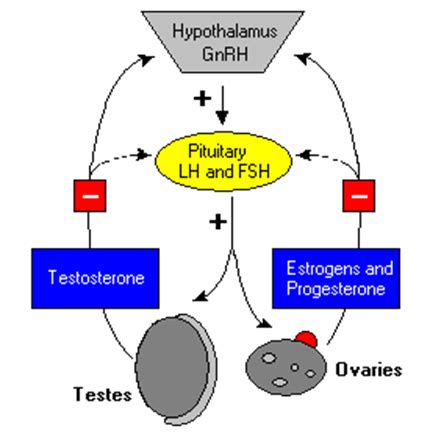Understanding FSH and LH Regulation in the Body
Regulation Of FSH And LH FAQ
What are FSH & LH?
FSH and LH are two hormones secreted by the pituitary gland in the brain during the menstrual cycle. Blood levels of these hormones are often tested to determine how your ovaries are functioning. FSH ( follicle-stimulating hormone) is released when estrogen levels are low.
What hormone releases follicle-stimulating hormone (FSH) and luteinizing hormone (LH)?
To start, your hypothalamus releases gonadotropin-releasing hormone (GnRH), which stimulates your pituitary gland to release follicle-stimulating hormone (FSH) as well as luteinizing hormone (LH) — the gonadotropins.
What is follicle-stimulating hormone (FSH)?
Follicle-stimulating hormone (FSH) is a hormone your pituitary gland makes and releases that plays a role in sexual development and reproduction. It affects the function of ovaries and testicles. Despite its name, follicle-stimulating hormone doesn’t directly affect your hair follicles or hair growth.
How does FSH affect menstrual cycle?
In women, when FSH levels fall towards the end of the menstrual cycle. This is sensed by the hypothalamus, which produces more gonadotrophin-releasing hormone (GnRH), which in turn stimulates the pituitary gland to produce more follicle stimulating hormone (FSH) and luteinising hormone (LH), and release these into the bloodstream.
How are LH and FSH regulated?
Past and recent research indicates synthesis and release of the two hormones are subject to extensive and independent regulation. LH appears to be secreted predominantly via the regulated secretory pathway, whereas FSH release is largely constitutive.
Are FSH and LH regulated by the same endocrine and paracrine regulators?
The pituitary gonadotropin hormones, FSH and LH, are key regulators of reproductive physiology. Though the two hormones are produced by the same cell type, often in response to the same endocrine and paracrine regulators, they sub-serve different biological functions and their synthesis and secretion are differentially regulated.
How does GnRH regulate the release of luteinizing and follicle-stimulating hormones?
GnRH regulates release of the gonadotropins luteinizing hormone (LH) and follicle-stimulating hormone (FSH) from specialized cells (gonadotropes) in the anterior pituitary gland (see figure The CNS-hypothalamic-pituitary-gonadal target organ axis ). These hormones are released in short bursts (pulses) every 1 to 4 hours.
Regulation Of FSH And LH References
If you want to know more about Regulation Of FSH And LH, consider exploring links below:
What Is Regulation Of FSH And LH
- https://www.bbc.co.uk/bitesize/guides/zxhktv4/revision/2
- https://my.clevelandclinic.org/health/articles/24638-follicle-stimulating-hormone-fsh
- https://www.womenshealthnetwork.com/pms-and-menstruation/lh-fsh-testing/
- https://www.ncbi.nlm.nih.gov/books/NBK539692/
- https://www.yourhormones.info/topical-issues/menstrual-cycle/
- https://www.merckmanuals.com/professional/gynecology-and-obstetrics/female-reproductive-endocrinology/female-reproductive-endocrinology
Regulation Of FSH And LH Information
Explore Related Topics
Decoding the Side Effects of Hormonal Therapy in Male Infertility Treatments
Share your experiences and knowledge about the possible side effects of hormonal therapy for male infertility and join a conversation about managing and mitigating these risks.
